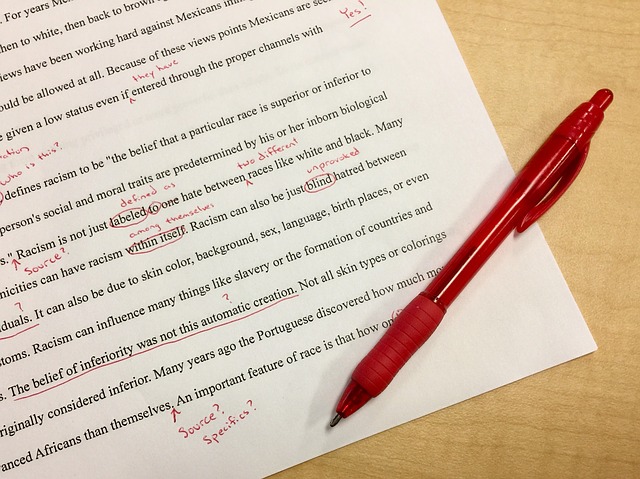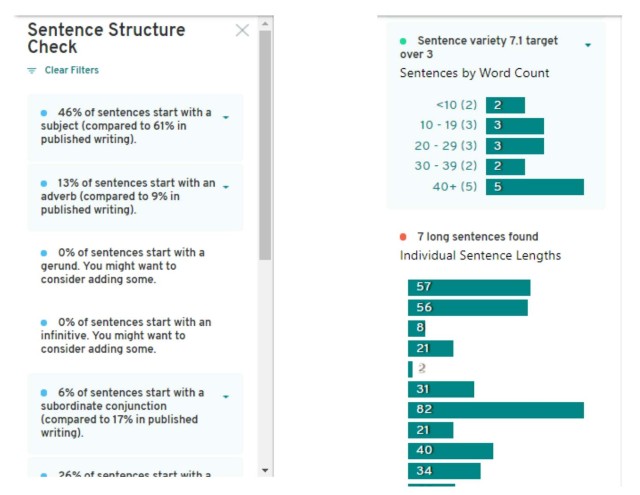
I’m a believer in delivering a polished manuscript to my editor. I have several reasons for this. First, I know that if I have a clean manuscript, my editor is going to pick up on more minute issues. They won’t be bogged down in messy prose or huge plot holes.
Second, editors often give their quotes based on how hard the work will be. If my line editor is changing several words a sentence, she’s probably going to charge me more—and for good reason! And finally, I send my book to beta readers before line editing and proofreading. I want my beta readers to enjoy the book and offer critiques on major plot points instead of struggling through a cluttered, weak document.
That’s why my books pass through several (okay, maybe more than several!) rounds of editing by my own eyes. But when I’ve looked at the same tens of thousands of words repeatedly, I’m bound to miss some problems.
That’s where deep edits come in.
What Are Deep Edits?
Some writers or editors will use the term deep edits as a synonym for developmental or substantive editing. These are edits that focus on the structure, plot, and pacing of a novel. Plot holes, characterization, worldbuilding—these are the types of things a developmental editor will focus on.
I use deep edits to mean something entirely different. These are some of my last stages of editing. A deep edit means focusing on one issue and editing only for that.
This means that you’ll avoid changing anything but the one specific item you’re looking for. Here are a few things I deep edit:
- Showing versus telling
- Dialogue tags
- Breadcrumbs for smaller plot points or big reveals
- Characterization
- Adverbs
When I pass through my manuscript looking at just my dialogue tags, I can catch every single one. Often I find instances when I need to add some action or emotion. When I deep edit for characterization, I focus on one character at a time. I can easily find occasions where they did or said something out-of-character.
Sometimes when we write the first draft, a new plot point will appear later in the manuscript. Have you ever read a book where something happened, and it didn’t make sense at all? It wasn’t a surprise; it was just random and made the story unbelievable. Deep editing can help you find places to sprinkle in breadcrumbs for these plot points.
Using ProWritingAid for Deep Edits
ProWritingAid is an editing program. But if you’re only using ProWritingAid for spelling and grammar, you are missing out! ProWritingAid’s additional features are powerful. And they make deep editing easier and more precise.
Please note that the screenshots feature an excerpt from Alice’s Adventures In Wonderland by Lewis Carroll. This is because this work is in the public domain. I am by no means suggesting that this classic needs to be edited.

Style
The style report in ProWritingAid is one of the most comprehensive tools. This report checks your manuscript for several different features. I use this tool several different times during deep edits. For style reports, I recommend checking smaller excerpts of your writing, either by chapter or by scene.
The first feature in the style report is readability. Sometimes our writing is unnecessarily clunky. The readability function picks up on words that may make your writing more obtuse than you intended. Of course, flowery prose is sometimes what we want in our fiction. Every suggested change may not be necessary, but it forces you to take a deeper look.
The style report also checks for passive voice. Passive voice isn’t always a bad thing. But in general, it should be used sparingly. ProWritingAid will find instances of passive verbs that you miss.
My favorite feature of the style report is the adverb list. One of my final deep edits is always cleaning up my adverbs. Adverbs can often be replaced with more active writing. An adverb is usually a sign that we need more showing instead of telling. They can add unnecessary words and make our writing weak.
I used to use a free tool that checked my adverb usage. But ProWritingAid made this deep editing stage much more powerful. The style report separates adverbs outside of dialogue from those inside dialogue. Why is this a big deal? Because dialogue needs to sound authentic, and people speak in adverbs.
We don’t always speak in strong, active prose. We don’t describe something out loud by showing instead of telling. Adverbs in dialogue make our characters sound real. They don’t need to cut as mercilessly as other adverbs.
Structure
Of all the features in ProWritingAid, I think structure might be the most powerful. There are three reports in this feature: sentence structure check, transition, and length. We’ll focus on sentence structure and length because the transition report is more useful in non-fiction writing.
Ask anyone in my critique group, and they’ll tell you that sentence variety is something I harp on over and over. Sentences with the same structure can make your writing boring and repetitive.
Sometimes, we need repetition. Short, simple sentences are useful in action scenes. Flowery, complex sentences can slow down the pacing. And one of my favorite literary devices is anaphora, which is the intentional use of repetition for emphasis.
But we walk a fine line. Starting our sentences the same way or having too many subordinating clauses will make our readers’ eyes glaze over.

The sentence structure check tells you how many of your sentences start with different features. Do too many of your sentences start with the subject? The report will tell you how that compares to other published works. It tells you how many sentences start with adverbs, gerunds, infinitives and more. This feature more than any other will take your writing to the next level.
The length report analyzes your sentence length—and it shows you graphs of the data! You might have overlooked a sentence several times until you realize it is 82 words long! You’ll also get a breakdown of how many sentences are certain lengths.
Repeats
The repeats section of the ProWritingAid tool has two reports: all repeats and echoes. Every writer has words that they overuse. You might not even know what they are, but your readers will notice redundancy. For example, I use the word smirk a lot. When I do a deep edit for word choice, I often wonder if my characters know how to smile any other way.
Use the echoes feature for smaller excerpts, like scenes and chapters. This will show you repeated words that are used close together in the text. This is how you find instances where your character sighed three times on one page.
The all repeats report is useful for longer excerpts or your entire manuscript. This will find words and phrases that you overuse throughout the whole text.
Readability
The readability section of the ProWritingAid editor has several reports you can run on your manuscript. I’m going to highlight three of them.
Use the readability report when you are deep editing for sentence structure and sentence variety. It will tell you how easy your document is to read. It will also point out paragraphs that are challenging. This feature is also helpful when deep editing for pacing. (But there is a pacing report, too!)
The sticky sentences report is great when deep editing for word choice. Glue words are the 200 or so most common words in English. When a sentence contains too many of these, it slows down the reader. This helps make sure you are using active verbs and powerful nouns in your writing.
Finally, clean up your writing even more with the diction report. This report highlights vague and abstract words. It also picks up on words that can be omitted for clarity.
There are even more reports you can run in ProWritingAid for your deep edits. If you do a deep edit for dialogue tags like I do, there’s a dialogue report. The consistency report can check for grammar and spelling consistency. In early drafts of my first book, I capitalized king only half the time! The report will keep you from making those small errors.
I highly encourage you to implement deep edits in your writing process. What are your weaknesses? Instead of editing for everything, you’ll strengthen your writing more by picking one to focus on. You’ll interact with your text in a new level, and you can be certain that your manuscript is the best it can be.

